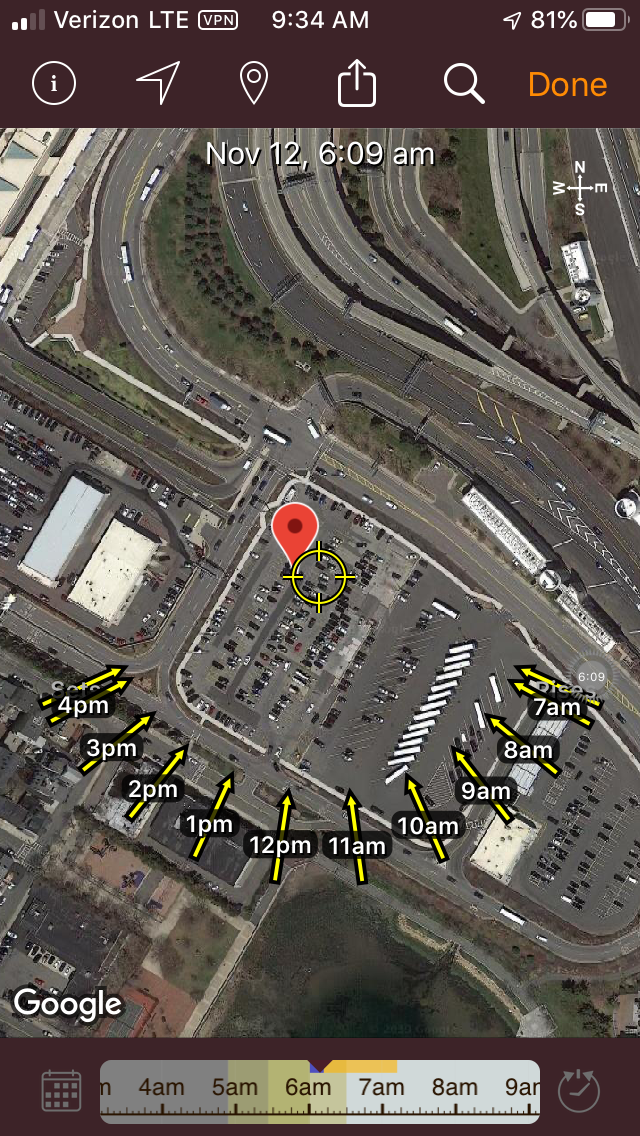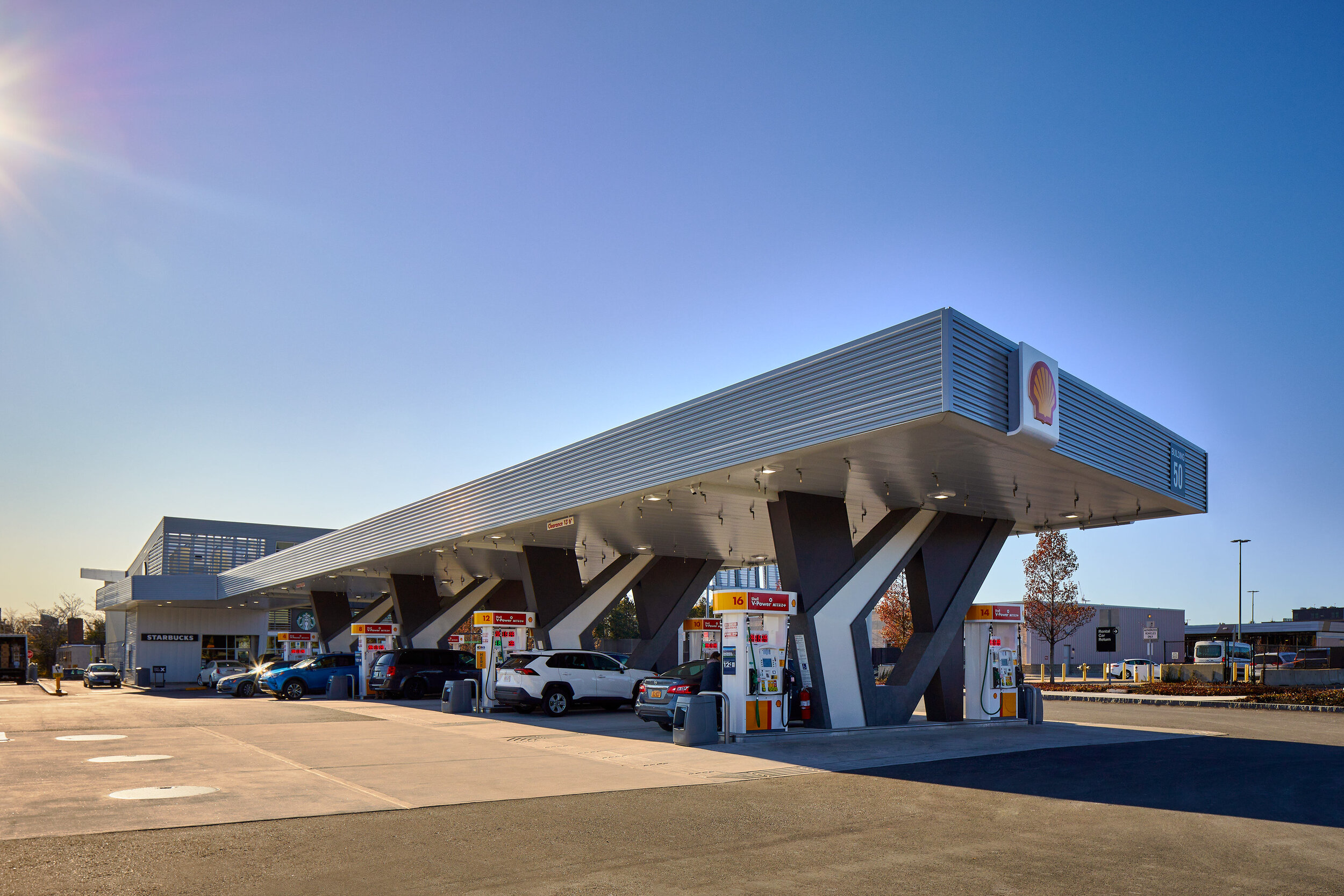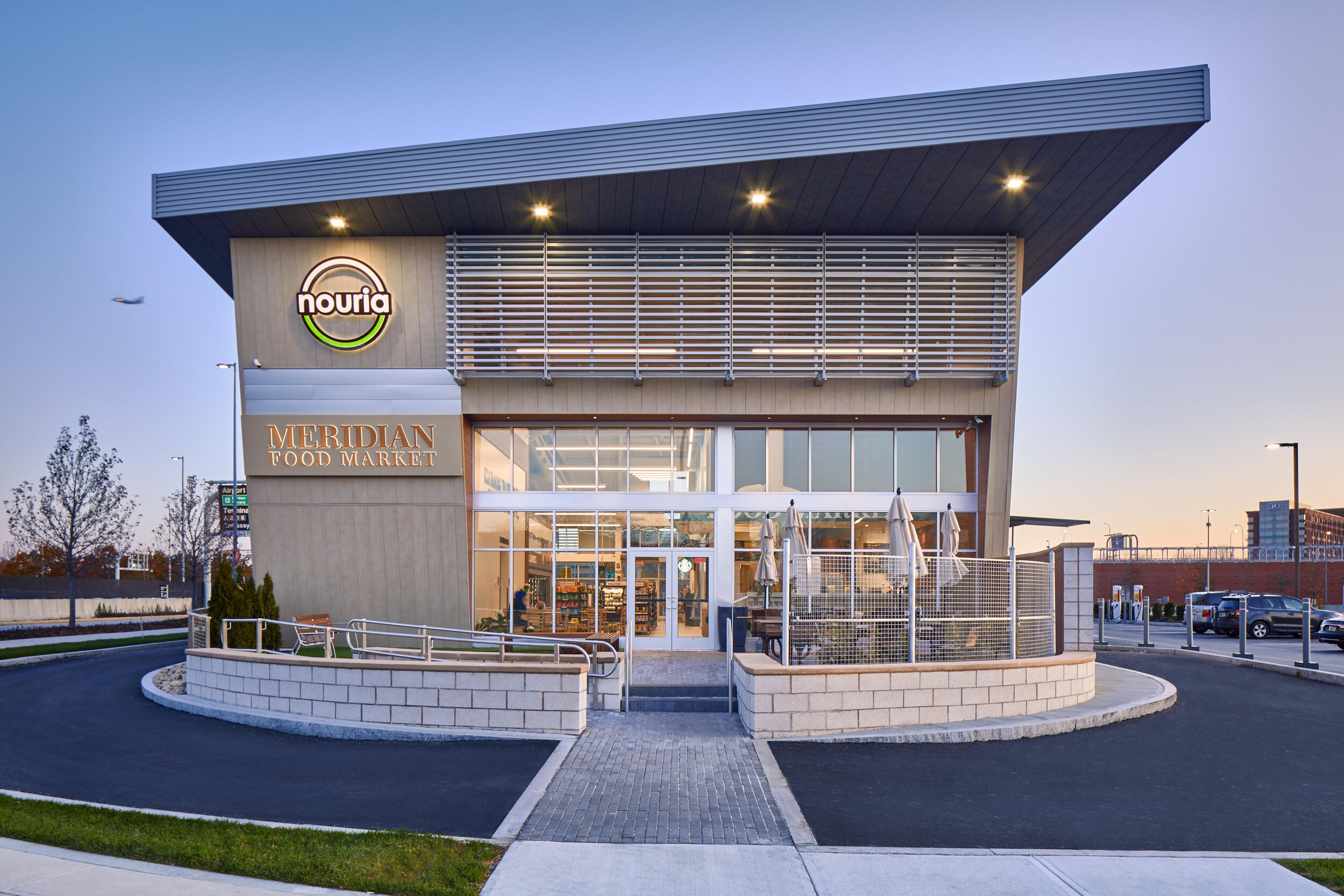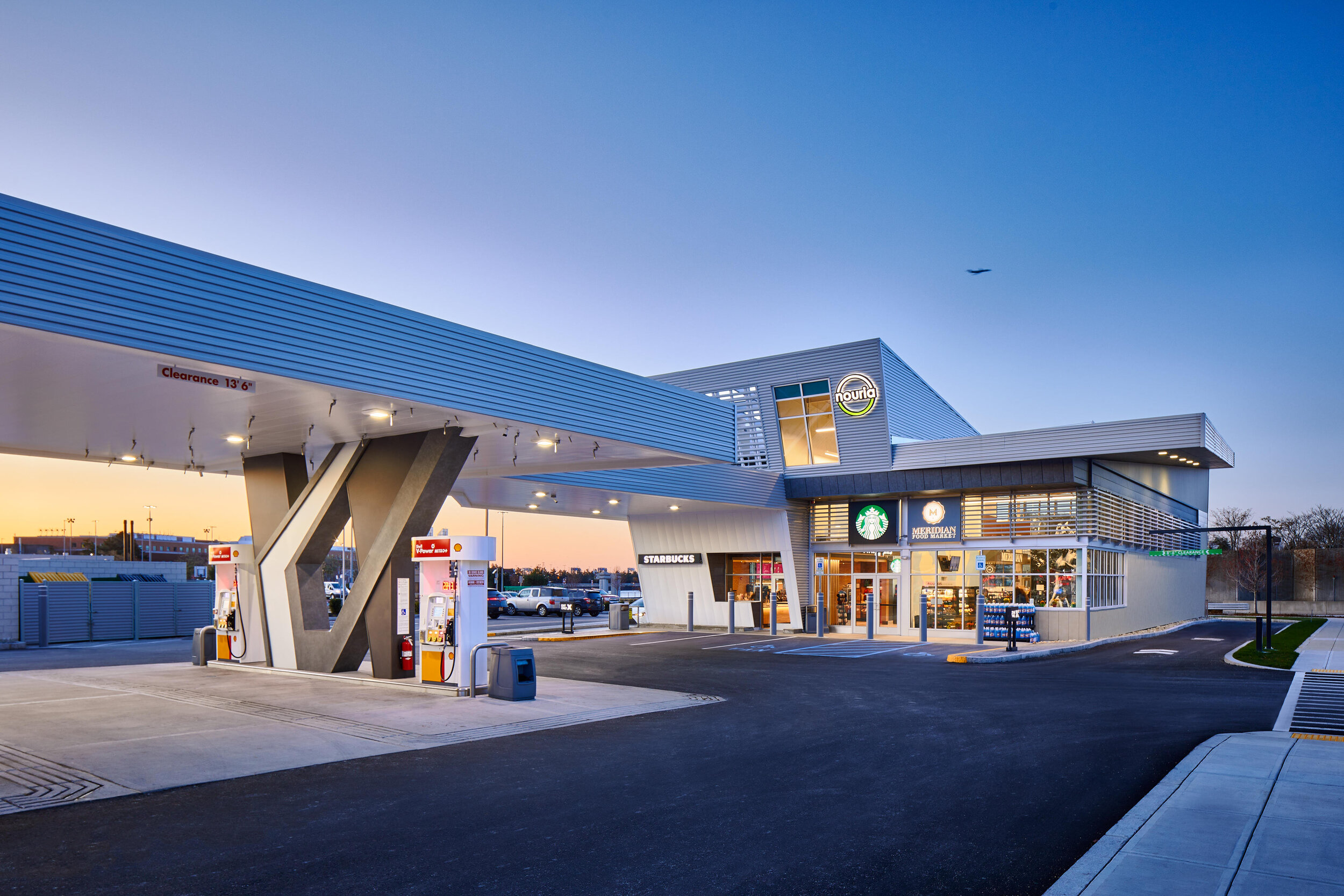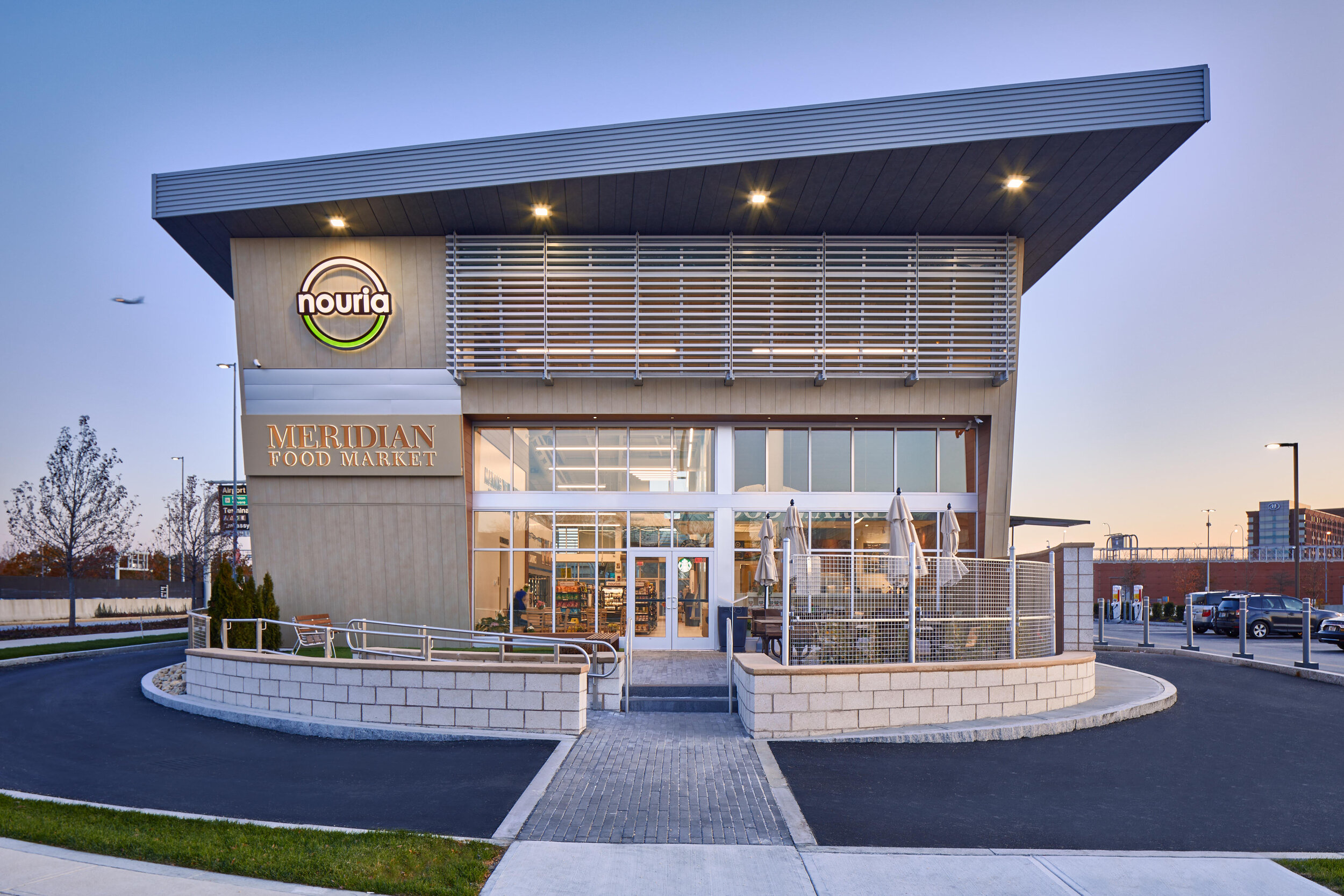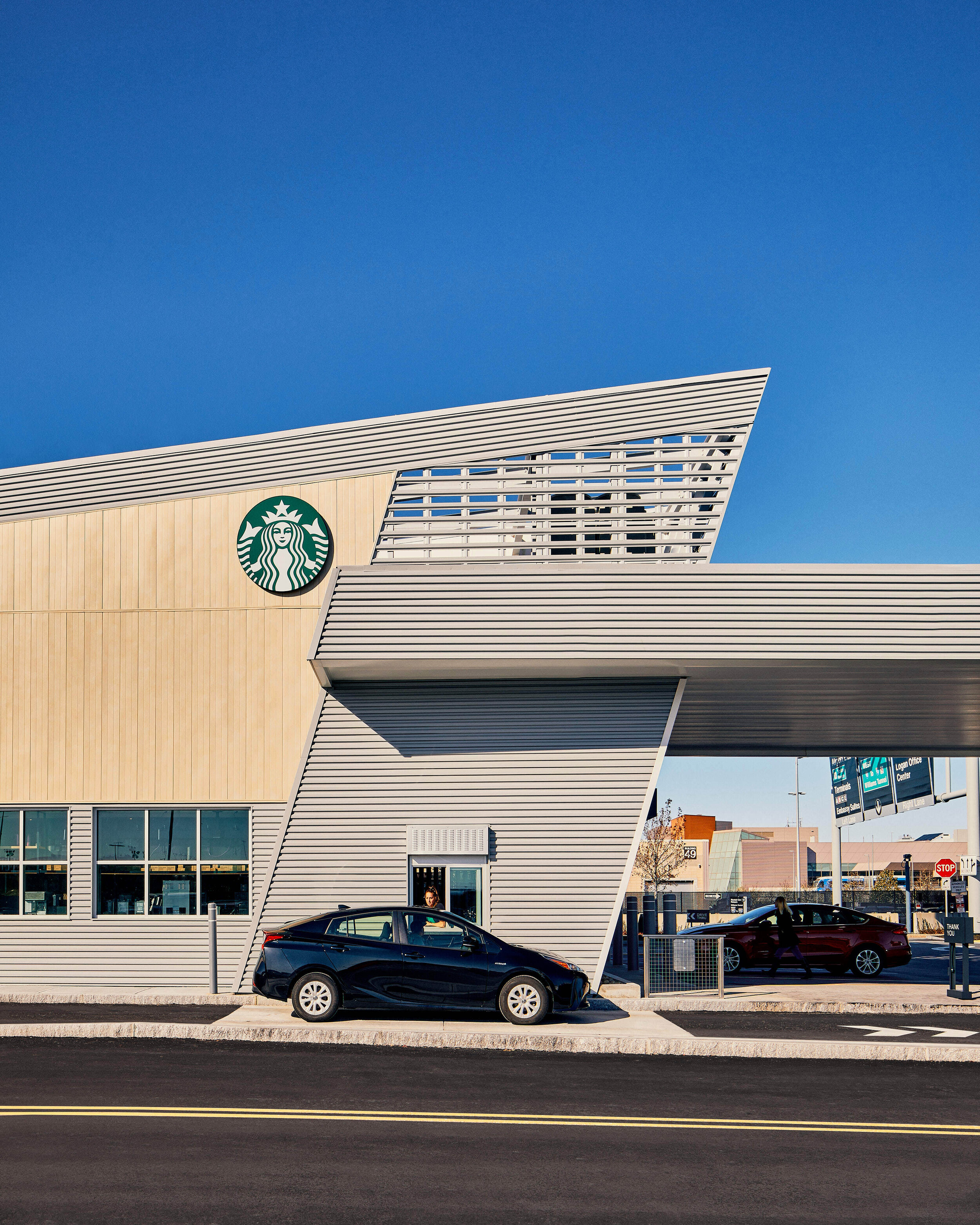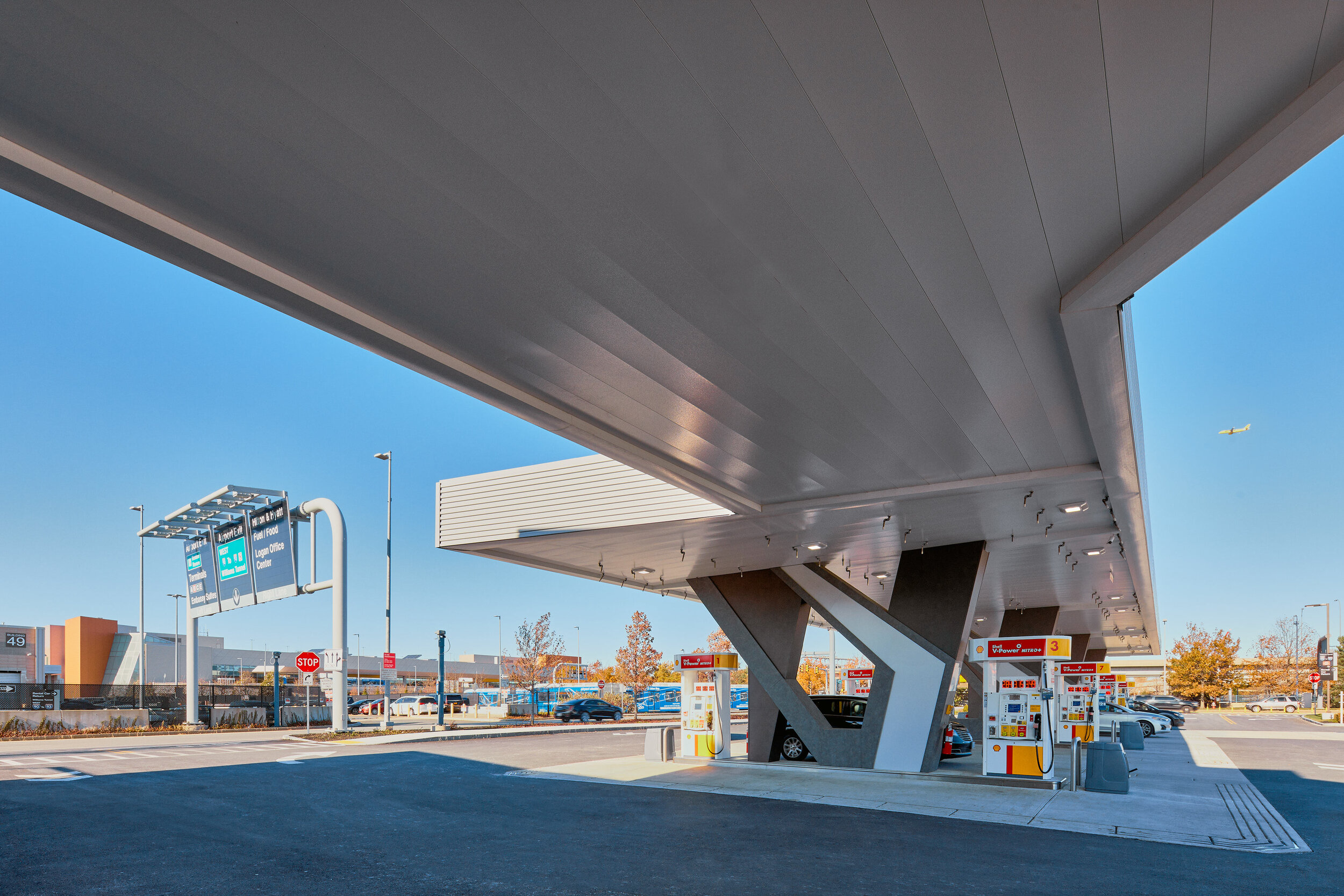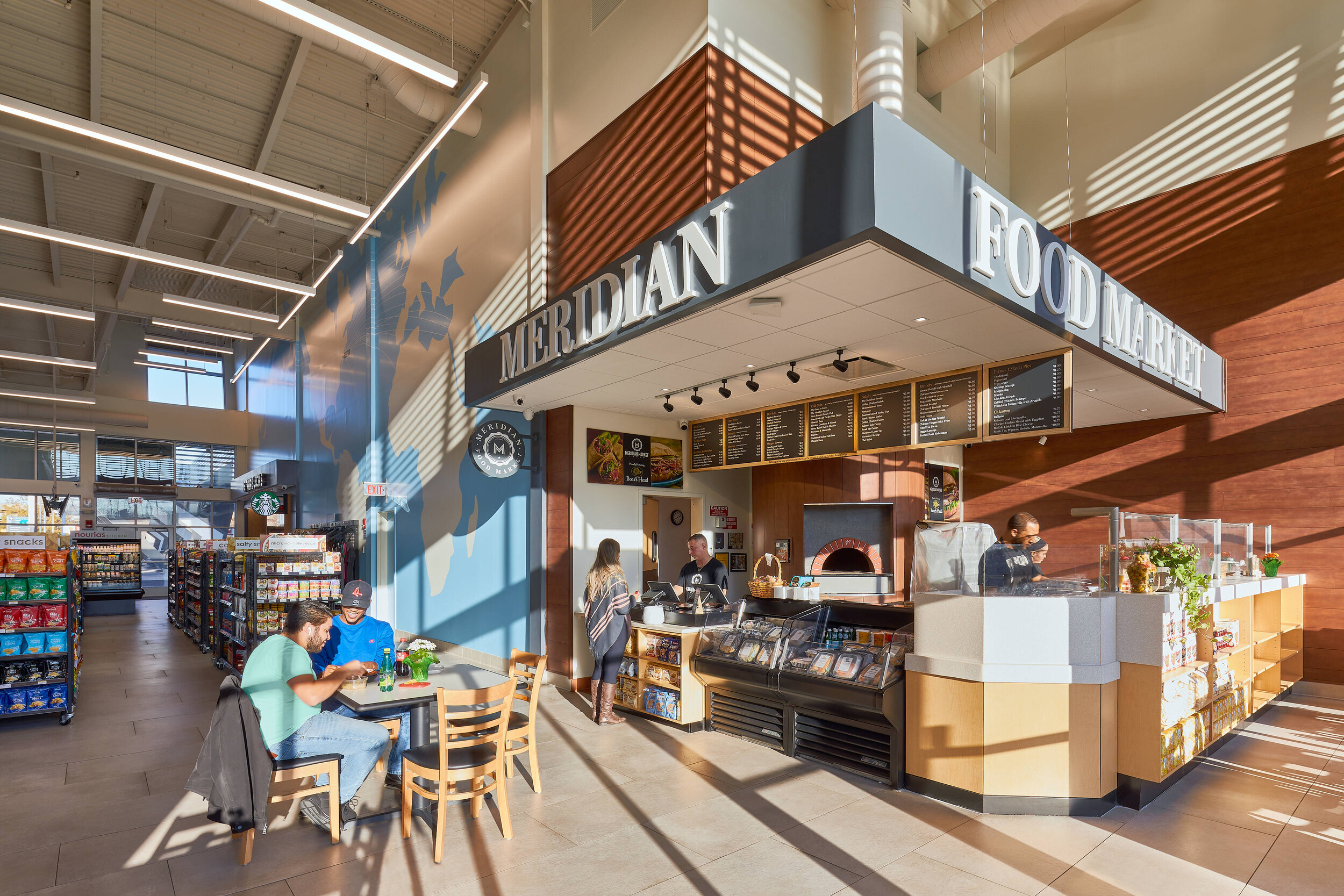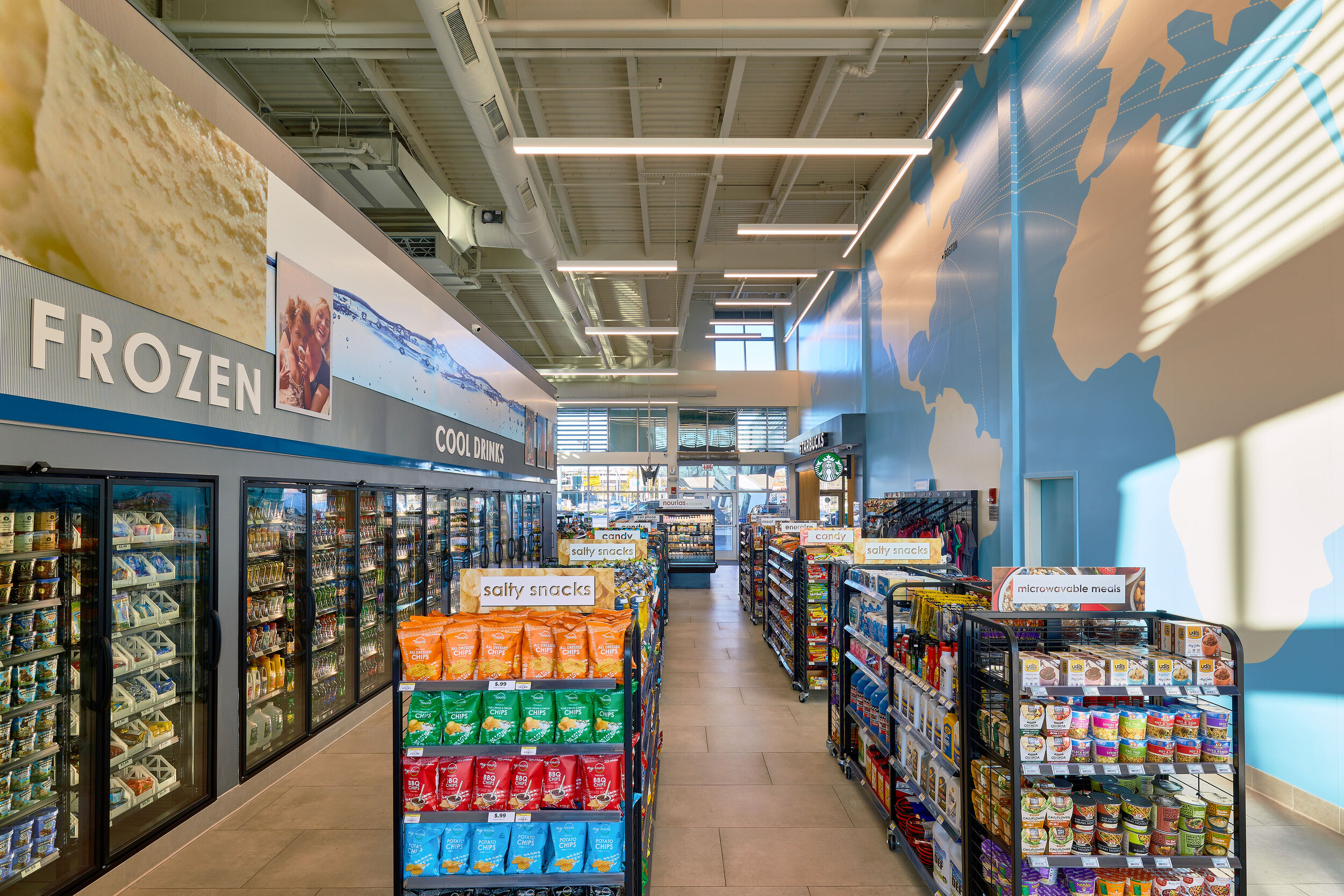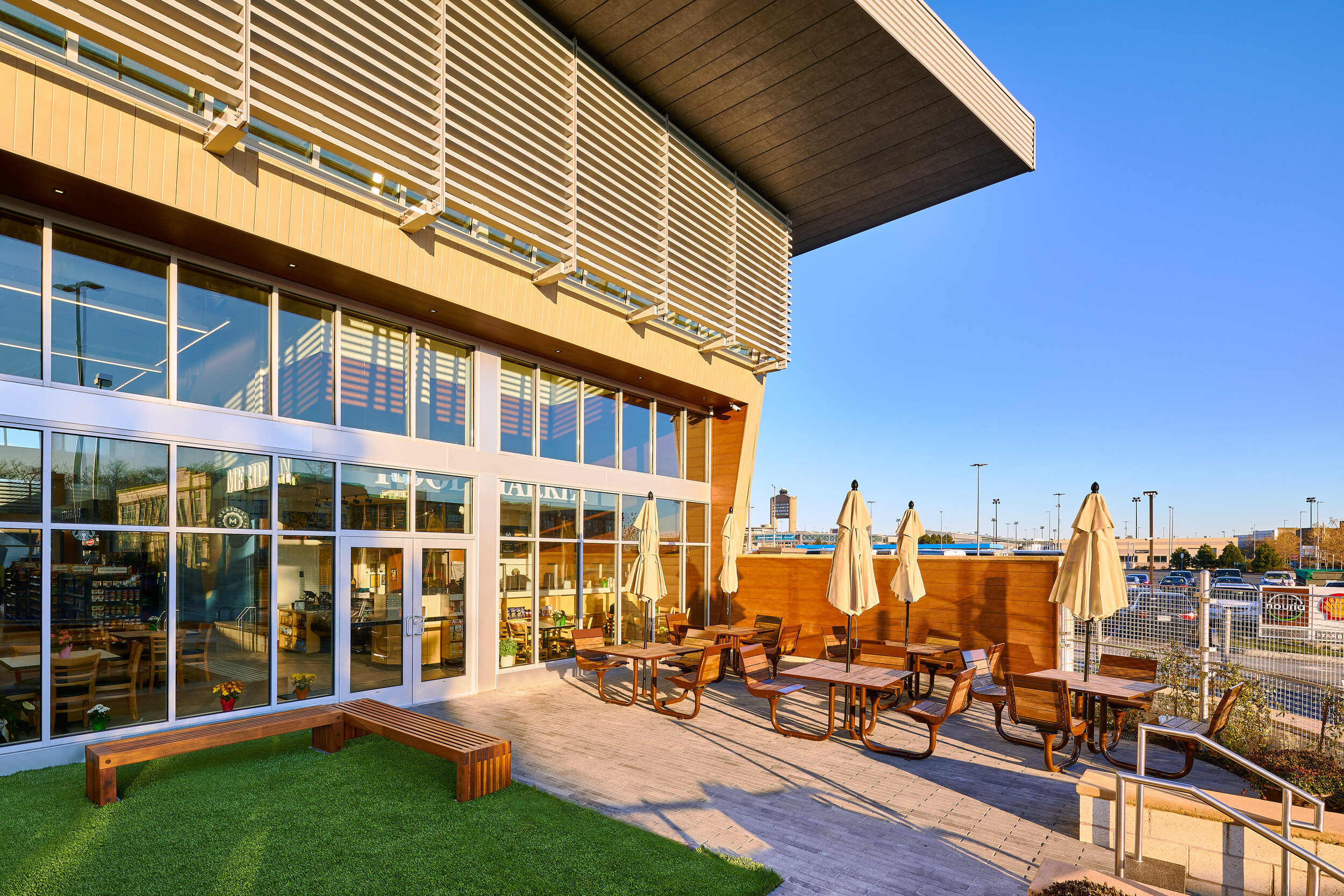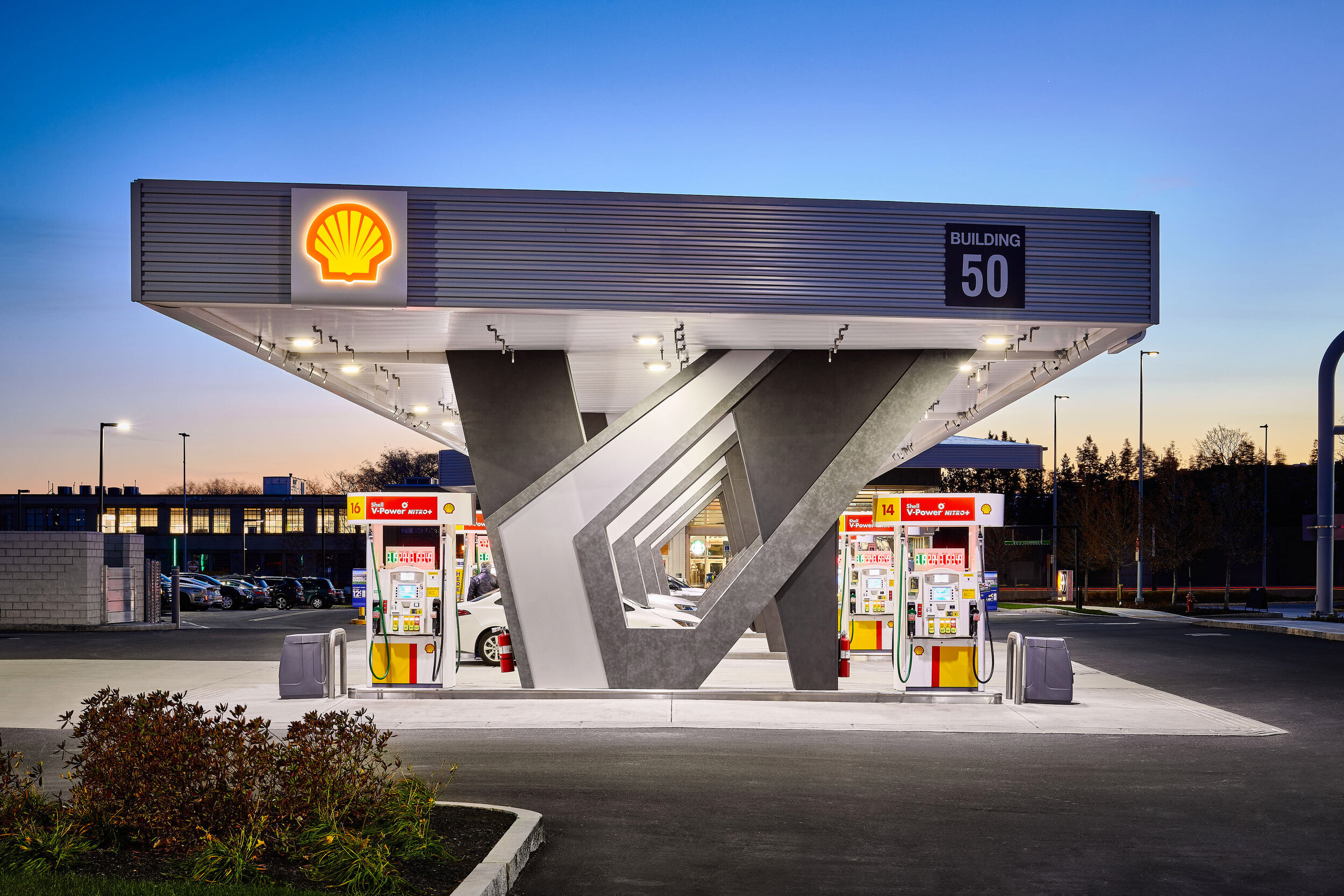Over the past few weeks, I've written a few articles explaining the philosophy behind my business practices, copyright, and licensing. If you haven't read them and are interested in the business of photography, please check out those articles, here. I'll be cover more business-related topics in the future.
This week, I would like to take you behind the scenes of an exciting shoot from late last year. I'll go over my approach from planning the shoot, the technique behind making the images, and through the final stage of image delivery. Articles such as these may invite technical questions, and I hope you'll feel free to reach out with those in the comments below or by reaching me directly through email.
Let's get started.
For Phase Zero Design © Joseph Ferraro
Nouria Energy Convenience Center: Logan Airport
Commissioning Client: Phase Zero Design (Architect)
Shoot Date: November 13, 2019
Site: 6,600 sq. ft.
Development Costs: $4.75M
Additional licensees: Nouria Energy (Site Owner), Entegra Development and Investment (LEED Consultant), Pure + Freeform (Materials - Metal Walls and Ceilings), The Ludlow Group (Marketing Firm), & AGC Chemicals/Lumiflon® (Materials - Paints and Coatings)
Photo Assistant: Tony Degrazia
Click here for the extended Gallery.
Proposal and Planning
I've been photographing projects for Phase Zero Design since my first year as a freelance photographer in 2014. I began working with them even before I knew I was going to dig my heels into architectural photography as a specialty. Their faith in my work has given me the confidence to grow as an architectural photographer.
As one of their projects moves into the final finishings phase, their marketing department reaches out with a Request for Proposals or RFP. After receiving an RFP, there are four main things I ask for to help estimate the costs for photographing their project accurately.
Nouria Energy © Joseph Ferraro
Final Number of Deliverables. Approximately how many images are Phase Zero Design interested in licensing from this project? Going into a shoot without knowing how much work is involved is a recipe for failure. The final number of deliverables does not indicate how many images are created on-site, but it sets a goal and identifies expectations.
Get out your calendar. When is this shoot likely to happen? I like to establish a project start date. While this is not likely going to affect my fee, it is crucial in creating an estimate that serves as a contract. I honor my agreements with my clients in good faith even if the shoot gets postponed. But, establishing a schedule creates momentum for the project.
Map it Out. I ask the client to provide site plans and any snapshots they've taken around the site? This aids in visualizing the scope of the project. I also ask my clients to mark-up any particular angles they're interested in, and I use that as a guide for capturing angles they prefer while also finding compositions that are interesting to me.
Single or Multi-Party Use. Are there other parties interested in licensing the photographs from this shoot? Who could benefit from buying in now instead of licensing images later? A multi-party buy-in allows all commissioning parties to split the total cost of the shoot (making the initial cost to my client much less than they would've spent on their own). Generally, most multi-party shoots increase by 25% of my Creative Fee for each party involved.
Example: If my Creative Fees for a shoot would cost my client $4500 (before expenses), then adding another party, like the site owner or a general contractor, increases my fee by 25%, to $5625 - an increase of $1125. But, in the end, both my client and the other party may split the cost of the shoot.
Multi-party shoots also grant each party a license to the same number of photos specified in the estimate, but each party may choose their images. Commonly, I'll create more than a few alternative angles, beyond the initial shot list.
If my client is interested in buying a license for another party, what I call a "gift license," I typically only increase my fee by 20% (still covering my licensing costs, but giving my client a break for their generosity).
In this case, Phase Zero Design purchased a license to the final set of images for their client, Nouria Energy, as well. So, by including this in my estimate as a gift license, I've guaranteed commercial usage for Phase Zero and Nouria Energy.
Next, I ask my client to send back a signed estimate and often a 50% deposit. A signed estimate is essential to enter all parties into an agreement, protecting both my interest in the shoot and protecting my client by holding me accountable for delivering the content I've promised.
I then begin planning the shoot by investigating the site, assembling a crew, and preparing what gear to bring.
Planning
One of the advancements in technology that many modern photographers could hardly do without is a decent weather app and a calendar of sunrise and sunset times.
Sun Seeker’s timeline for the sun’s movement on 11/13/29.
I've used a few of each over the years, and I currently rely on DarkSky for my weather predictions and Sun Seeker for my sunrise/sunset timing.
My assistant and I were looking at a 6:15 am arrival time for sunrise. We knew we would likely stay through sunset, given the New England sky in November glows nicely up to 15 minutes after sunset. So, we were in for a long day.
For gear, I always bring:
Camera Body: Canon 5D Mark IV with remote and backup batteries
Lenses: Tilt-Shift Lenses: 17mm, 24mm, 50mm, & 90mm and a 24-70mm f2.8, plus 3-4 filters for various things
Laptop: 13" MacBook Pro with a USB tether cable to connect the camera to the computer, a charger, backup battery, and hood to cut down on screen glare.
Tripod: an 8ft carbon fiber Benro
Lights: Godox AD600Pro Monolights with Batteries and AC Adapters, Godox AD200 Pro II Strobes with extra batteries, and various gels for color correction
Accessories: air blower and lens cleaning wipes/cloths/spray, gaffers tape, light stands, boom arms, umbrellas, reflectors of various degrees, grids of multiple degrees, black cloths, white clothes, shoot through rolls of diffusion material, clamps of different sizes and purposes, sandbags, knife/leatherman, a bike tool with screwdrivers and allen wrenches, small ladder to reach my camera if we're 8 feet up on the tripod, rolling cart to move the gear and the computer around with us quickly, and coffee, water, coffee, water, mints, and more water.
Packing the Forester the night before and the morning of is a lifesize Tetris match.
On-Site
While my agreements state that a representative from my client's office must be on-site to facilitate access or approve shots, it's not always necessary. Once I've been working with a client for a while, it's easy to send low-res proofs by email throughout the day to keep them up-to-date on our progress. Building trust is a big part of forging long-lasting relationships with my clients. If my client cannot be on-site, I always request the contact information of the building management or someone at the site who can aid us should access issues arise or if we need to manipulate the lighting on the premises.
In this particular instance, there were to be many more exterior shots than interior shots, and the high temperature for the day was a frigid 19˚F, not including the wind chill at Logan Airport (which sits on a peninsula hanging out into the Boston Harbor). I'd never ask anyone to tag along in those conditions.
The first thing I do when I arrive on-site is to review my client's marked-up site plan and orient myself to the physical site and conditions around it. I like to identify any obstacles or elements that need to be moved for particular angles, or consider the background and adjacent sites and make a mental list of distracting elements.
Nouria Energy exists on the site of an old parking lot, and the streets around it were in excellent condition. The only elements that caught my eye were the bus depot next door, the airport communications tower, and I noticed just how busy the now-active fueling station was to the public.
That's right, this site was fully operational, and we had to time our shots not only around the schedule of the sun but the rush of the coffee- and lunch-crowds. The convenience center at this site has a Starbucks with a drive-through and lobby, a full service and well-stocked convenience store, and a Meridian Food Market takeout restaurant, famous in East Boston for its hearth-fired Italian food.
Nouria Energy © Joseph Ferraro
Off to the Races
Being flexible during a shoot can ease the stresses of trying to force a shot to happen. I find that whenever our backs are figuratively against a wall, it's better to step aside and evaluate whether there may be another approach. This shoot was a good test in conducting a thorough walkthrough with my assistant, but being willing to shift our timeline for individual shots if things weren't going to plan.
Typically, I like to start with an establishing shot, especially if the light is beautiful at the site when we start. On this morning, the sky was clear, and we could already see that the runway at Logan was sending up flights at an excellent frequency. This would allow us to get a plane in the sky for a few shots.
As the day went on, this shoot became set to the tempo of the public. I don't like prohibiting people's movements, and I'd rather just wait for them to move at their own pace and time my shots the way. But, when we do need to intervene, my assistant or I will approach someone and gently call their attention to the camera and explain what we're doing. Nine times out of ten, the person is kind enough to move for us or even be positioned by us into the shot where we could use a person to be waiting in line for coffee or walking through a doorway.
The process of photographing each composition can either feel like a rush against time or like a waiting game. I haven't determined which pace I prefer, but having enough time to compose and get everything set on location is much more efficient than spending time editing at the computer later. During this shoot, there was some waiting around for people to walk into a shot to give the project scale and purpose, and waiting for cars to fill up their tanks and leave for specific compositions to work.
Cutting Room Floor
Just like the movies, some shots don't make it to the final edit. Sometimes a shot may feel like a good idea at the moment, but once I'm back at my desk, it can be easy to identify what works and what doesn't. On average, one or two shots aren't worth sharing with the outside world. But, once my final selections are determined, I assemble a simple proof gallery for my clients to view what we created. Out of the pool of images I share with them, they'll reply with their choices, and the final edit begins.
From returning from the shoot to getting my client's proofs prepared can take two to three business days, depending on how busy I am that week. But, I try not to keep my client waiting for more than a week for proofs. Then, once they reply with their choices, I'll take about 4-5 days in getting finals turned around to them - but again, no longer than a week.
Turnarounds are efficient because we take the time to photograph a composition with the goal in mind that I can get my proofs to their final state with minimal editing.
Billing
Once my client's final selections are edited and sent off, I file their final invoice with them, through Square, and offer them the choice to pay the remaining balance by check or with Square's online payment portal. In this business, being paid at a regular frequency can be hard to arrange. But, I try to make the sale as simple as possible to help that along.
But wait, there's more!
Other parties that weren't interested in buying in on the shoot before production started, now see the images and start reaching out. On this particular shoot, I heard from three additional interested parties and ended up selling them licenses to the complete shoot, after the fact. Some people call that gravy.
Its additional sales that make copyright protections and allowing the content creator the freedom to license their work essential to this business. If I gave my clients the images and let them share them with other companies to use, I'd have missed out on all of that additional revenue. So, to those just starting their businesses, if you have any questions about copyright and licensing, please reach out to a veteran in this business and get their honest take on it.
That's all for this one, I hope you've enjoyed the photography, and if you have any questions about what you see here or anything business-related, please don't hesitate to reach out.
Thanks for reading.
- Joe


